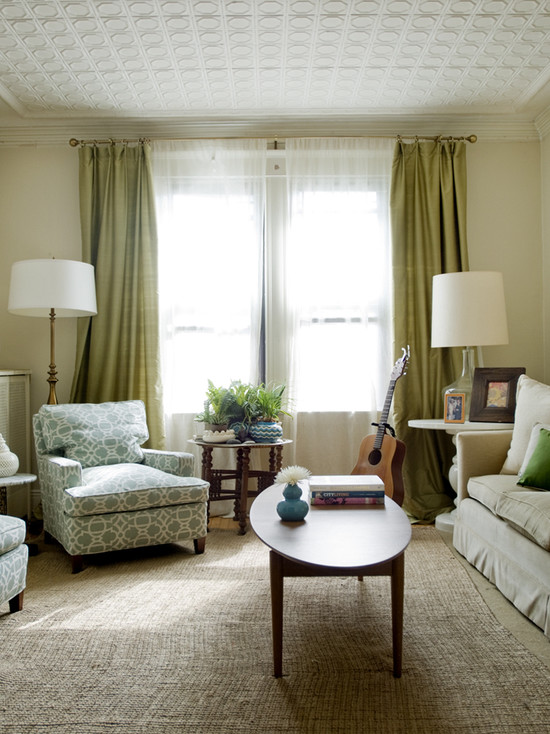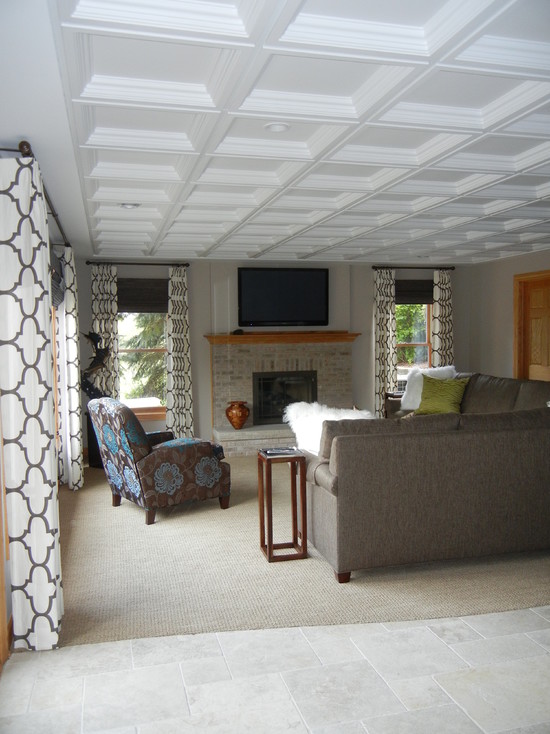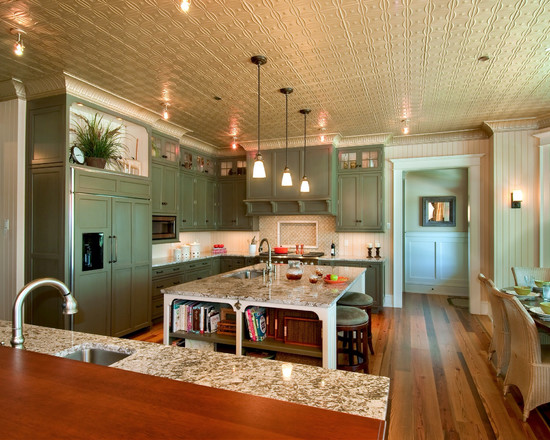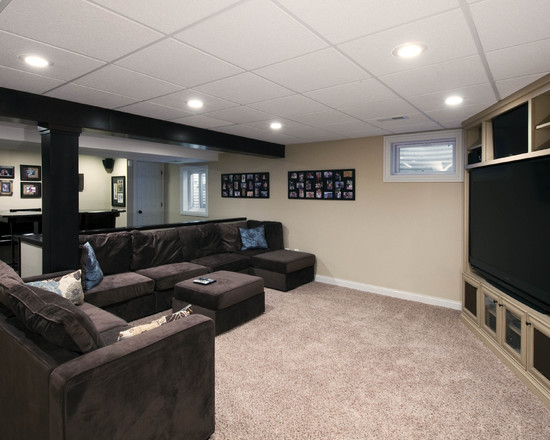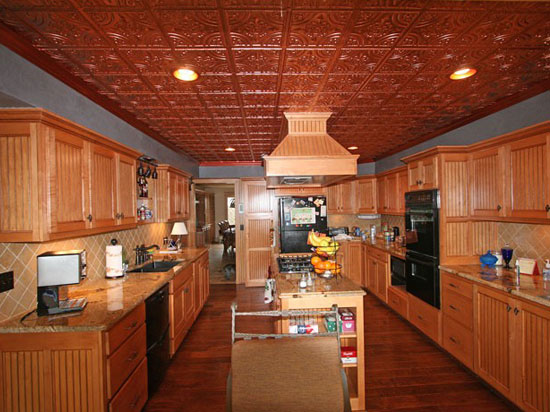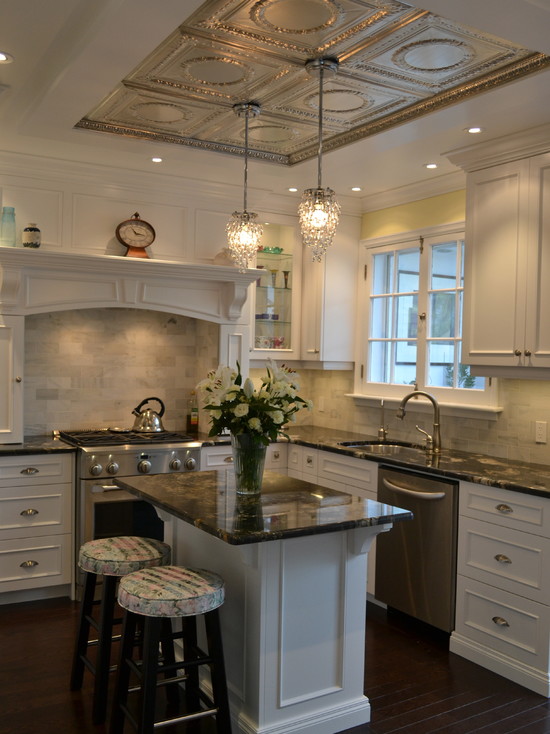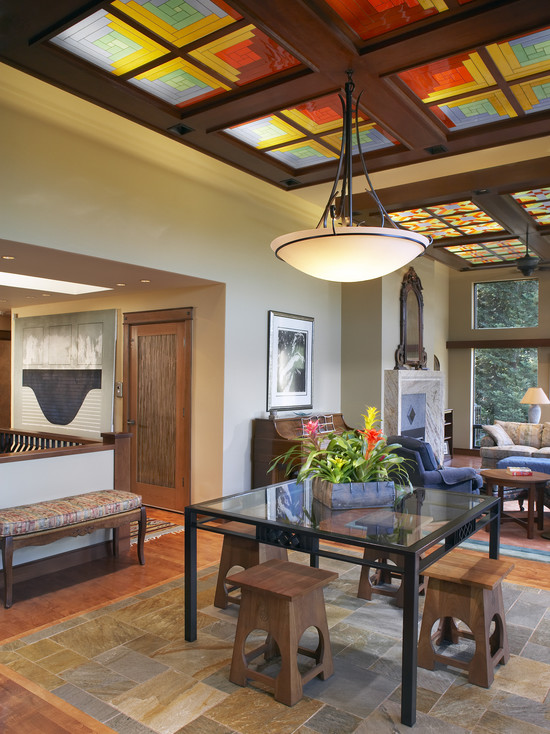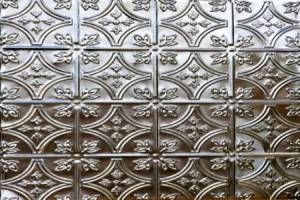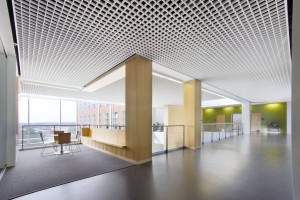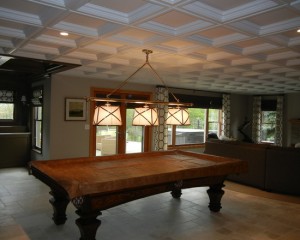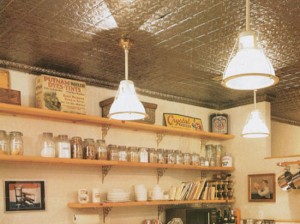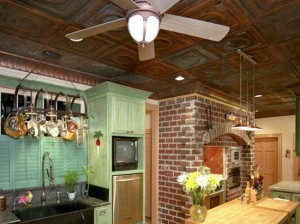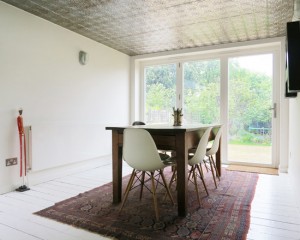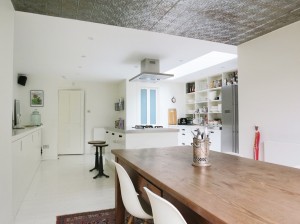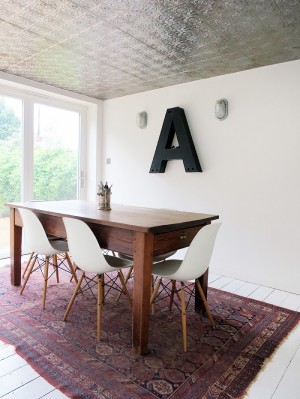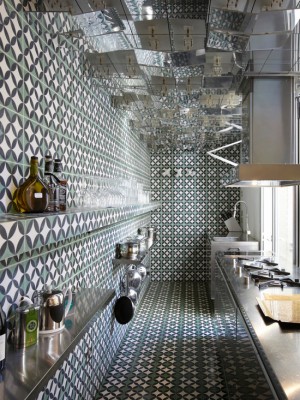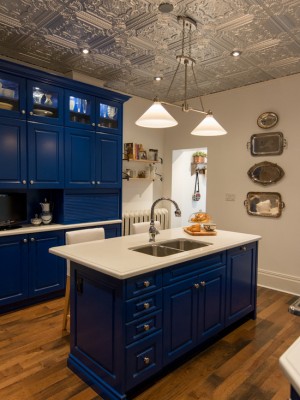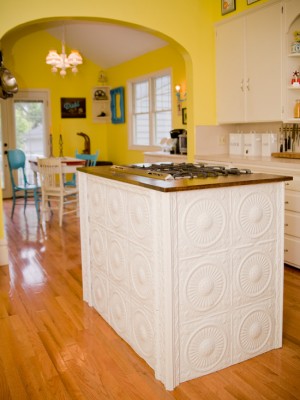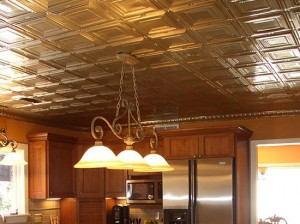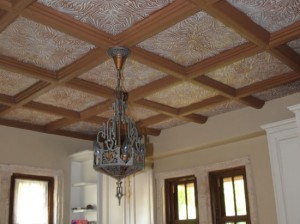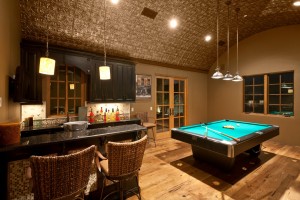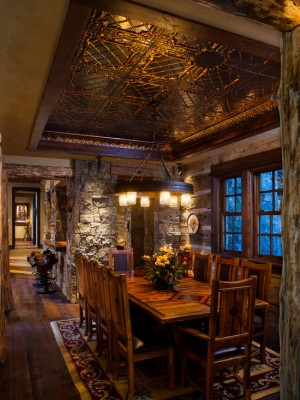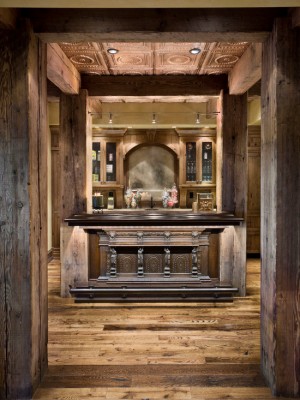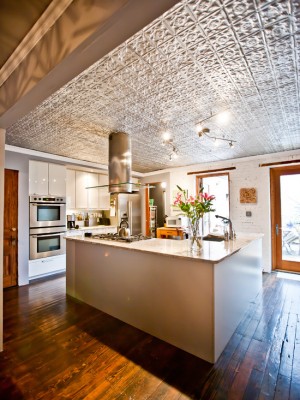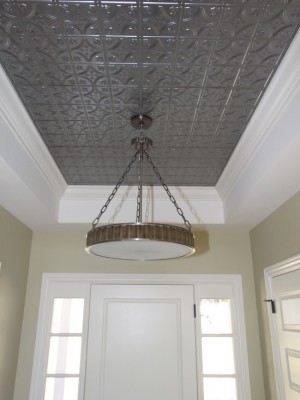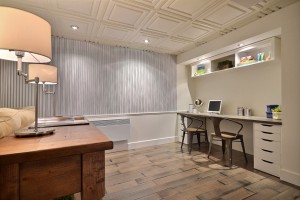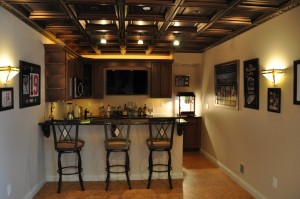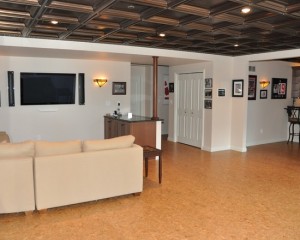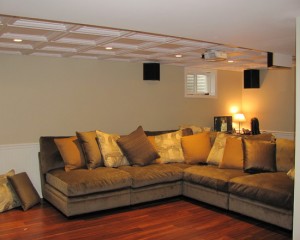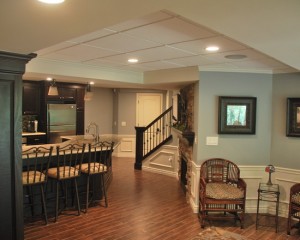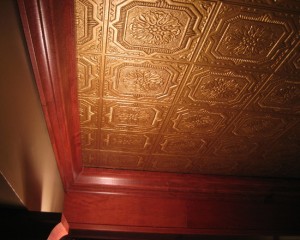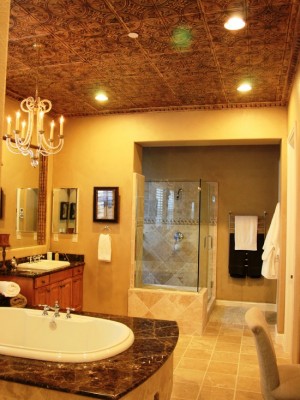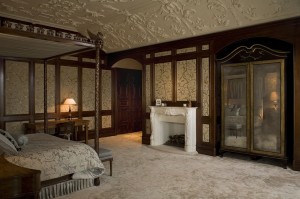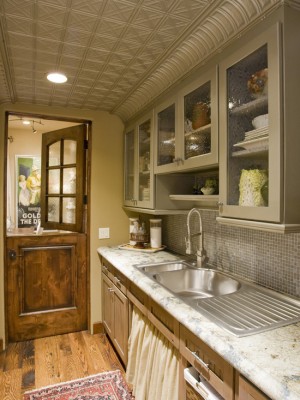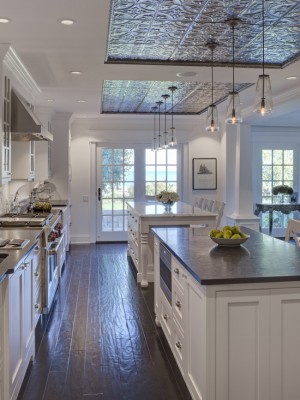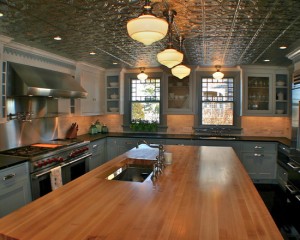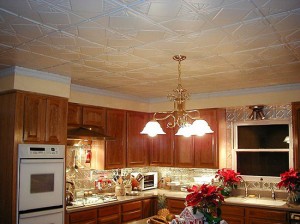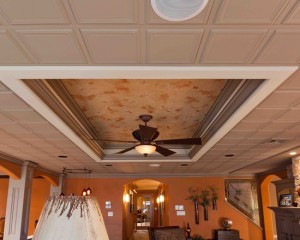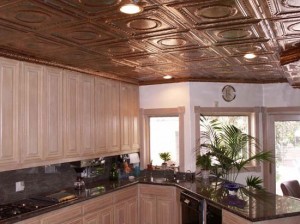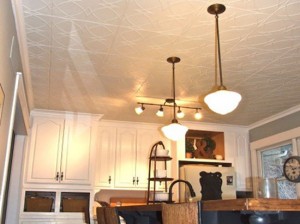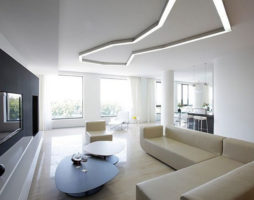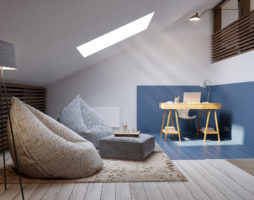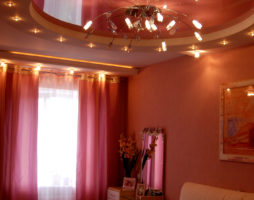The ceiling is an integral part of the design of any room. However, when choosing finishing materials for its design, one should focus not only on style matches, but also on such parameters as heat resistance, sound insulation, and ease of installation. All these qualities have different types of ceiling tiles. The design variety of this type of finishing material allows you to use it in the decor of any residential interior.
Ceiling tiles, what is it?
“Designers consider the polystyrene foam option to be the most versatile”
Ceiling tiles can be made from many materials. In its production, wood, fiberglass, light metal alloys, polystyrene foam and more are used. The most versatile designers consider the polystyrene option. Such tiles are prepared using a special technology that allows you to decorate its surfaces with patterns and various patterns. It perfectly imitates the structure of natural materials and practically does not differ visually from marble, wood, stone. All these qualities together give rise to such an unlimited demand for this modern finishing material.
back to index ↑Types of ceiling tiles: classification
Sorting of ceiling tiles by class is carried out taking into account the characteristics of production and technical qualities, so the products are classified as follows:
stamped tiles
This type of tile is produced from polystyrene foam blocks by stamping them. As a result, thin eight-millimeter plates with a loose surface are obtained. The manufacturing process, in principle, is not complicated, so stamped tiles are quite inexpensive, but this is where all the advantages of this ceiling finishing product end. The list of disadvantages is much wider:
- Stamped tiles are not characterized by refined surfaces in decor, as well as excellent quality characteristics.
- The porous surface of the stamping perfectly absorbs dirt - and this despite the fact that it is not recommended to wash such tiles at all, so it makes no sense to mount it on kitchen ceilings or decorate bathrooms with it.
- Not the worst, but unpleasant quality of this kind of tile is its high fragility. This causes a lot of problems during installation and increases material consumption.
Extruded tiles
For the production of these types of ceiling tiles, foamed polystyrene raw materials are required. It goes through the stamping process, after which the surface of the tile is covered with a polystyrene film or painted. The result is a smooth and beautiful tile with a thickness of no more than three millimeters.
This type of tile already has a wider range of advantages:
- The film that protects the surface of the tile is able to imitate the textures of other materials, such as wood or stone.
- The breadth of design diversity makes tiles in demand in the decor of various rooms, whether it be a hallway or a guest room.
- Extruded tile cuts beautifully. It has no sharp edges. All this allows you to create a seamless coating on the ceiling.
- During preparation, the tile is treated with a special dust- and water-repellent composition.
injection tiles
This is also one of the types of polystyrene foam ceiling tiles. Its thickness can be up to fourteen millimeters. Polystyrene raw materials are processed by exposure to high temperatures, after which a characteristic relief pattern is formed on the surface of the tile. This type of tile is also used in creating seamless ceilings.
Injection tiles can be square and rectangular, and also differ in size. The most popular are large tiles with sides of 50x50 cm.
As for the technical qualities of the material, it is an excellent heat and sound insulator, is not afraid of moisture and has increased strength. The front surface of the tile is covered with a film that is painted under stone, ceramics, fabrics or wood. There are options for colorless tiles that you can paint yourself. They are often used in decors where it is difficult to match the color of the finished ceiling.
back to index ↑Armstrong ceiling covering
This is a special type of ceiling finish that needs special types of ceiling tiles. Most often, its manufacture comes from mineral wool fibers, so the material is characterized by increased fire resistance and is not susceptible to moisture. More recently, this type of tile was used only in the decoration of technical rooms and public places, but now that magnificent 3D tiles have begun to go on sale, which, with their volumetric relief pattern, can bring unique design accents to any interior, this type of finish is increasingly common in living quarters, cafes and restaurants.
back to index ↑Ceiling tile selection criteria
Going to choose a tile for the ceiling, you will need to know not only its characteristics - you need to be able to navigate in which type of ceiling tile will most harmoniously fit into the existing interior, because in addition to the technical manufacturing features, this material also differs in types of surfaces.
Laminated tiles are very popular, which are distinguished by the richest color gamut, as well as retaining brightness for a long time. Its surface is often decorated with drawings, so it can be a wonderful decoration even for a classic interior, not to mention more modern decors.
Ceiling tiles with a three-dimensional raised pattern are a good choice for decorating ceilings in sophisticated styles that reproduce the Victorian era or the Renaissance.
Tiles that reproduce the texture of wood are demanding on design. Ideally, this finish will look in rustic styles such as Chalet or Provence.
The sleek, neutral design of the seamless ceiling tile, which stands out with its smooth surface, can be used in absolutely any style of decor.
Stepping on the heels of the popular laminated tile products with a mirror finish. The basis of these types of ceiling tiles is plastic. The advantage of this finish is that with its help it is very easy to visually expand the small space of the room. Most often, experts use this type of tile in the decor of hallways, corridors and bathrooms. To give the tiled ceiling a complete look, it is worth purchasing ceiling plinths. They will emphasize the beauty of the coating and make the room more comfortable.
Before paying for the selected tile, make sure that there are no chips, bumps, bevels on the corners of the products. The integrity of the individual elements is very important. You will never get a perfectly even coating if you cannot precisely match its components. To check the strength of the material, you need to lift several tiles lying in a column, holding the corner of the stack. Too fragile products will immediately begin to crumble.
back to index ↑Ceiling tiles: the benefits of finishing
"A tiled ceiling will never rot, mold"
Any type of ceiling tile has a number of advantages. Of course, the soundproofing and heat-saving qualities of the material come to the fore. Lightweight tiles do not weigh down the ceiling structures and have sufficient decorative effect. The scope of the assortment allows you to choose the color range of products that best suits the interior. A tiled ceiling will never rot or get moldy. He is not afraid of dampness and high humidity. With the help of decorative tiles, small defects of the decorated surface are reliably hidden.
The material is easy and convenient to work with: you do not need special tools. Cutting tiles can be done with a wallpaper or ordinary kitchen knife. You can lay tiles on the ceiling without the involvement of specialists and without even having special skills in finishing work. And one more far from the last advantage of ceiling tiles can be considered its affordable cost.
back to index ↑Ceiling tiles: common disadvantages
Each of the types of ceiling tiles has its own drawbacks, which you also need to know about and which you need to be prepared for. Expanded polystyrene, which is the raw material for the production of the bulk of the ceiling tiles, burns perfectly. This means that fire safety in the house will be reduced. The second "nuisance" may be the fact that you will never be able to make the tile seams invisible. In this aspect, ceiling tiles are far inferior to seamless finishes. And one more problem common for this kind of tile: its surface is very easily deformed when pressed, so when trying to remove pollution, try not to put pressure on it.
back to index ↑How to work with ceiling tiles
To quickly and efficiently glue tiles, it is better to work together. Preparatory work, regardless of which type of ceiling tiles you choose - budget or expensive, will require a lot of patience and diligence. To begin with, the ceiling will have to be divided into 4 parts and calculate the central point, from which, in fact, all the finishing work will begin. The marking is done with a rope soaked in cement or blue, stretched diagonally across the ceiling. Having thus calculated the center of the surface, perpendiculars are drawn through it. As a result, we get a grid with perfectly right angles, in which the starting quartet of tiles will be placed.
With this method of finishing, adhesive compositions are not applied to the ceiling surface itself, previously cleaned and well dried, but to the finishing material. Glue is applied with dots to the center of the tile and along its edges, wait a few seconds and glue the first tile to the corner obtained after marking. We do the same operation with the remaining three elements. The subsequent gluing of tiles is carried out parallel to the drawn perpendicular lines. The result is a cruciform base, on which further finishing work is carried out. This is the easiest and most convenient type of gluing ceiling tiles.You can start finishing work from the corner, in the so-called asymmetric way, but here for non-professionals there is a great risk of getting tiles inconsistent in the final chord. And one more secret. There are arrows on the back of each tile. They indicate the direction of installation work. Be careful not to stray off course, then the ceiling will turn out to be a uniform color. This is especially important if the tile has a pattern.

ceiling tiles with a three-dimensional pattern - the main feature of the interior design of the Renaissance
Helpful Hints
- When buying a tile, carefully inspect each element. The density of the foam and its granularity must be identical over the entire surface and in no case should the material crumble when touched.
– The corners and edges of each tile must be even and straight.
– Make sure that the types of ceiling tiles match each other. To do this, it is enough to fold them in a column. High-quality tiles will not break under their own weight.
- Tile with a complex pattern will require adjustment of the pattern, so it should be bought with a margin.
– The amount of ceiling plinth corresponds to the perimeter of the ceiling, but it should also be purchased with some margin for corner cutting.
- To prevent the tile from falling on your head, fasten it to high-quality adhesives. Moment, Titan, Liquid Nails, Econaset were recognized as the best brands.
– For painting ceiling tiles, only water-based paint compositions are used.
back to index ↑Conclusion
The interior as a whole greatly depends on the type of ceiling finish. Poorly executed work will negate any efforts to decorate the room and vice versa, a perfectly finished ceiling will emphasize the dignity of the house. Do not be stingy and choose high-quality types of ceiling tiles - then the decor of the surface covered with them will harmoniously and seamlessly fit into the overall solution of the interior composition!
Photo gallery - types of ceiling tiles:
